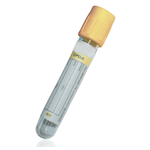Suitable Specimen Types
- Serum
- Li Hep Plasma
Sample Processing in Laboratory
Usual
Sample Preparation
Centrifuge
Turnaround Time
< 1 day if Mon-FriSample Stability
4 oC
Phenobarbitone (phenobarbital)
General Information
Phenobarbital is an antiepileptic drug used to treat tonic clonic and partial seizures. As an effective stimulator of P450 enzymes, its use leads to increased metabolism of several drugs, including other antiepileptics, carbamazepine, and valproic acid. The long elimination half-life of phenobarbital means that the drug must be administered in a loading dose to rapidly achieve a therapeutic blood concentration.
Because phenobarbital distributes into lipid tissue, obese patients may require a loading dose based upon their actual weight. The drug is addictive, and evidence of a withdrawal “syndrome” may present if the drug is discontinued suddenly. The most troublesome adverse effects of phenobarbital are sedation and negative effects on cognition, particularly in children. Because phenobarbital may impair learning in some children when used for a long time, it is important to keep concentrations as low as possible. The half-life of phenobarbital in neonates is longer than in children or adults—probably because of the larger volume of distribution and decreased metabolic capacity of infants—and needs to be considered in calculating appropriate dosing regimens. The half-life of phenobarbital is also reported to increase in patients over 70 years of age, indicating that doses should be gradually decreased as a patient ages.
From Warner et al.Clinical Chemistry, May 1998 vol. 44 no. 5 1085-1095.
Samples should be taken at trough drug levels by collecting a sample prior to the next dose of Phenobarbitone
Patient Preparation
None
Notes
Serum or heparinised plasma samples are required.
Do not analyse grossly haemolysed or grossly lipaemic samples.
Specimens should be tested within 8 hours of collection if kept at room temperature.
Phenobarbitone measured by HPLC-DAD
Please note this assay is not currently UKAS accredited
Reference Range
10-40 mg/L
Source : Pathology Harmony Recommendations
Specifications
- EQA Scheme?: Yes
-
EQA Status:
HEATH CONTROL
